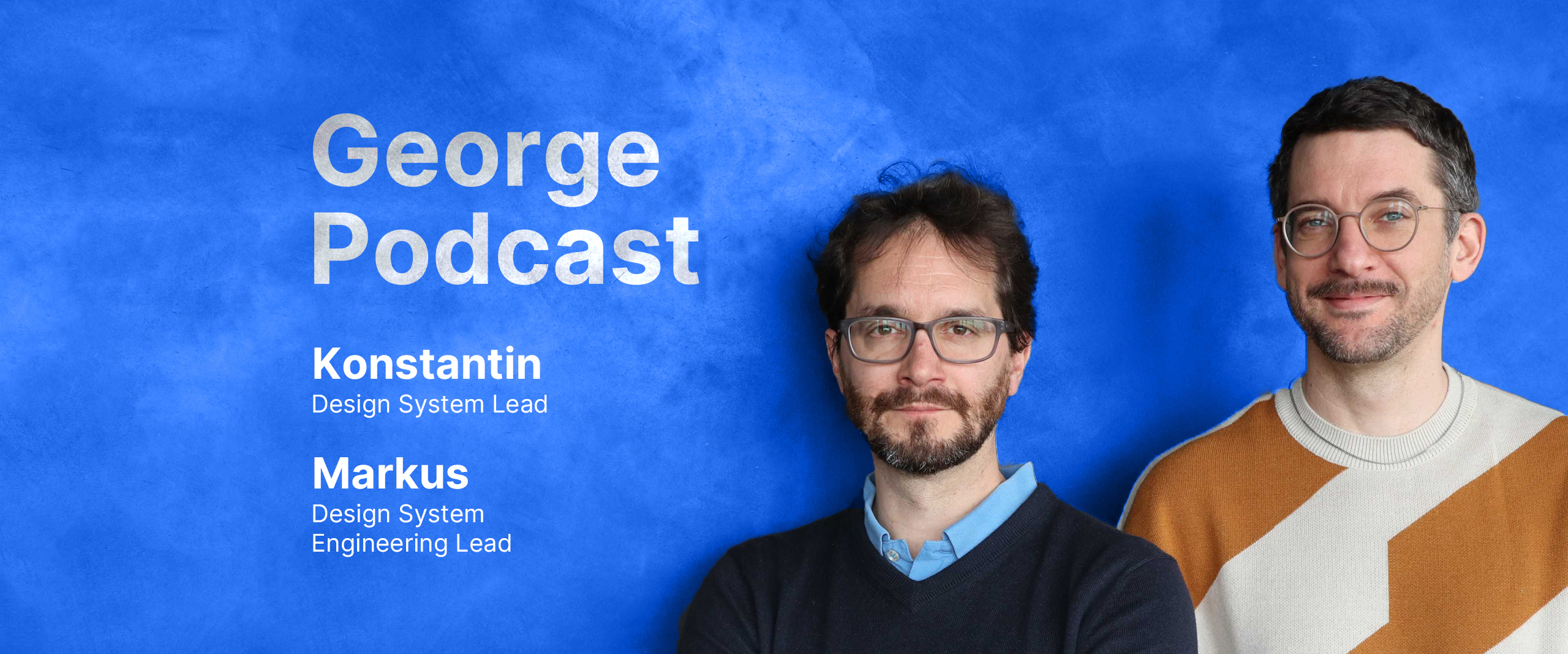What is behind the 3-letter-abbreviation GDS? Short answer is: a lot of the “how” of the smooth, consistent, and trusted user experience that George offers. Also, a lot of saving resources and getting from 50 shades of blue to the one and only true blue. Now that the George Design System is public, we took a closer look.
Markus Osanger and Konstantin Demblin are both seasoned Design System Engineers in leading positions. In this episode of the George Podcast, they delve deep into the George Design System, and its impact on modern web development. They explain the ins and outs of the system, discussing everything from its inception to its current use. Konstantin and Markus share insights and their experiences how the George Design System improves workflows and helps to enhance the user experience of George.
As single source of truth, the George Design System is of high importance for both sides of George. For the side which is working on George as well as the side which is using George. The GDS is – as are most of the design systems – public, following the best practice of many notable companies. Even the British Government shares its intriguing design with the world. Who would have thought that?
Our own system grew with other design system being public, being in the public discourse. Everybody can criticise, improve on it. [The GDS] is still kind of new-ish and by being in the public eye, it improved a lot.
(Markus Osanger)
Documentation, rules and single truths contradict creativity on the first glance. But on but on closer inspection, the “S” in GDS does not undermine creativity. On the contrary. The systematic approach rather fosters creative processes and creation.
The tool you choose limits you a bit, but it also helps you to focus.
(Konstantin Demblin)
By freeing you from repetitive and maintenance tasks or at least making these time consuming, the GDS frees up space, energy, and time for more creative work. This hand-in-hand of creativity and systematic approaches expands to other task areas, generally contributing to optimised workflows.
If you’re interested in learning more about the intersection of design, creativity, and technology, then you won’t want to miss this episode.


